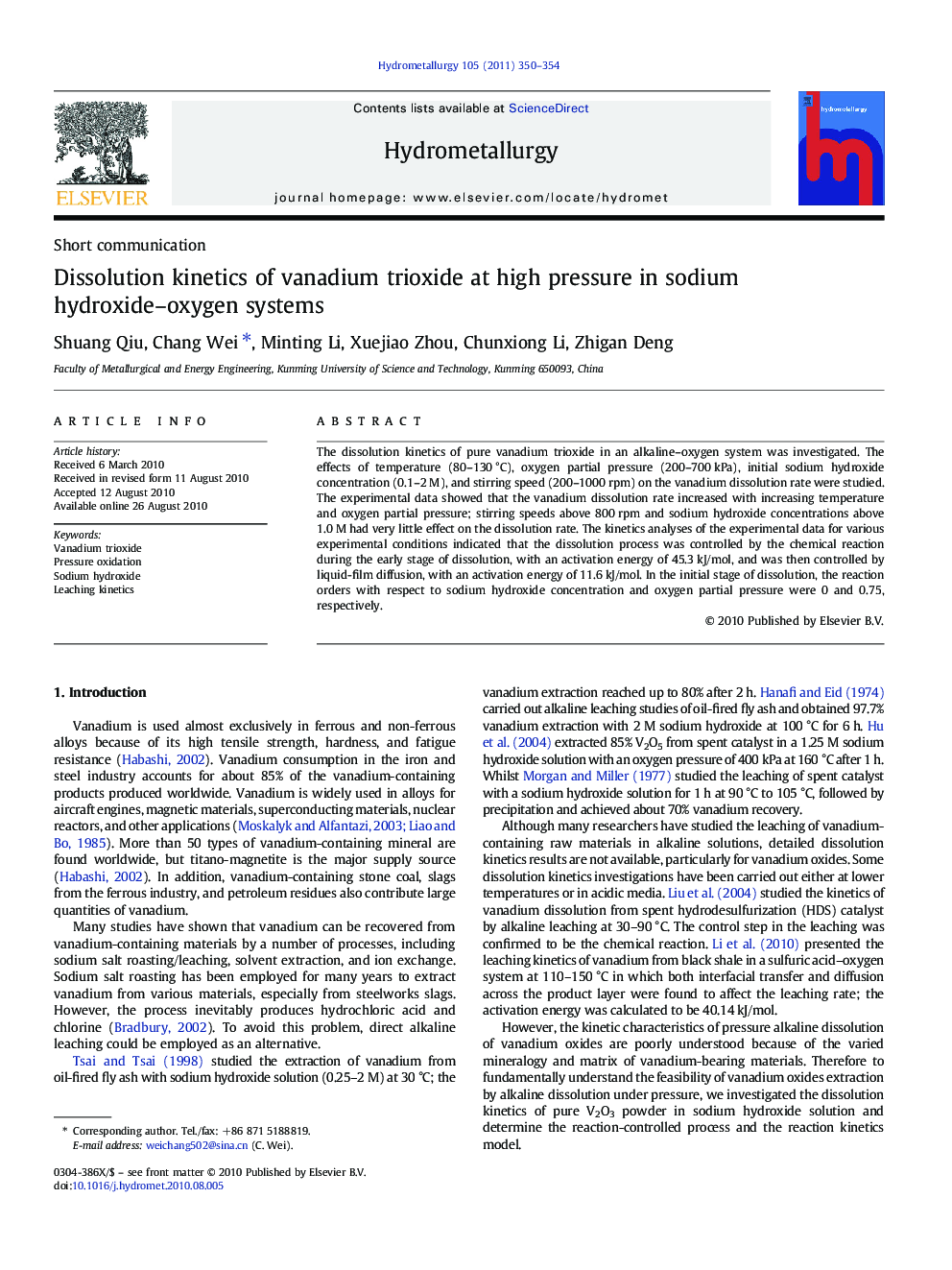| Article ID | Journal | Published Year | Pages | File Type |
|---|---|---|---|---|
| 212734 | Hydrometallurgy | 2011 | 5 Pages |
The dissolution kinetics of pure vanadium trioxide in an alkaline–oxygen system was investigated. The effects of temperature (80–130 °C), oxygen partial pressure (200–700 kPa), initial sodium hydroxide concentration (0.1–2 M), and stirring speed (200–1000 rpm) on the vanadium dissolution rate were studied. The experimental data showed that the vanadium dissolution rate increased with increasing temperature and oxygen partial pressure; stirring speeds above 800 rpm and sodium hydroxide concentrations above 1.0 M had very little effect on the dissolution rate. The kinetics analyses of the experimental data for various experimental conditions indicated that the dissolution process was controlled by the chemical reaction during the early stage of dissolution, with an activation energy of 45.3 kJ/mol, and was then controlled by liquid-film diffusion, with an activation energy of 11.6 kJ/mol. In the initial stage of dissolution, the reaction orders with respect to sodium hydroxide concentration and oxygen partial pressure were 0 and 0.75, respectively.
